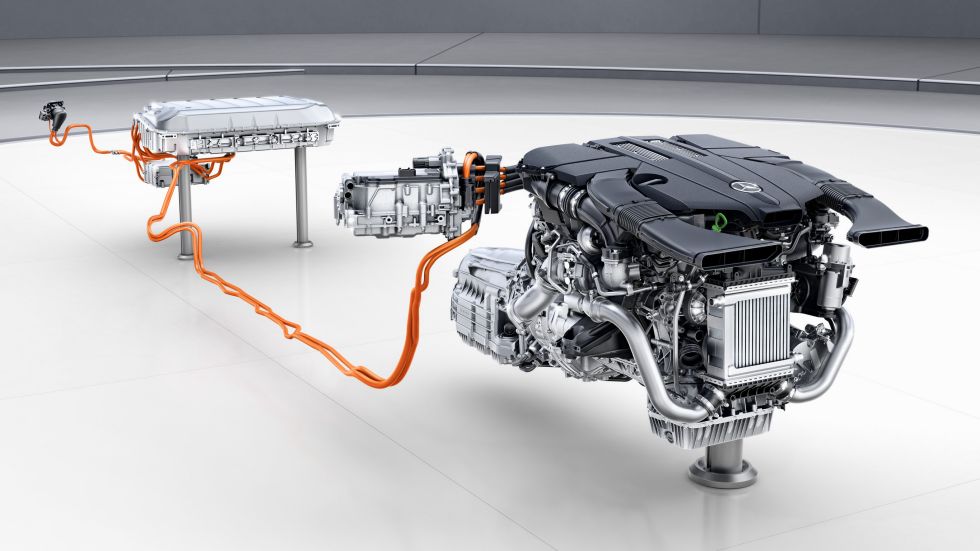The flagship limousine will be equipped with new AMG-developed petrol or diesel engines starting next year.
Mercedes-Benz has expanded the engine lineup for its flagship S Class limousine by adding three new engines – an inline-six diesel, petrol units, as well as a biturbo petrol V8 petrol. These motors include “ground-braking” technologies such as an integrated starter-alternator, (ISG), and a 48-volt electric system with an auxiliary compressor (eZV).
The V8 replaces the S500’s V8 and is considered “one of most efficient V8 petrol engines in existence.” It is codenamed M176 and features a cylinder activation system that can shut down up to four cylinders. This helps improve the fuel economy by 10% compared to its predecessor. The turbochargers were also mounted between the cylinder banks by engineers.
According to the German company, the biturbo V8 is capable of producing 476 horsepower (350 kilowatts), and 516 pound-feet (706 Newton meters) of torque with a 4.0-liter displacement. The revised S500 will be equipped with a petrol particulate filter starting next year. Mercedes is a pioneer in this technology. The filter is made from cordierite, which Mercedes has been using for the past two years in its S500.
Next, a six-cylinder, inline petrol engine codenamed “M256” will be available. It uses a 48-volt electric system, a turbocharger with an electric auxiliary compressor, and an integrated starter-alternator. According to the automaker, the ISG offers hybrid functions such as boost and energy recovery while also allowing for fuel savings previously reserved for high voltage hybrid technology.
Mercedes has not yet provided exact figures, but the 3.0-liter inline six motor produces over 408 horsepower (300 kW) as well as more than 369 lbft (500 Nm), according to Mercedes. The new engine produces around 15% less carbon dioxide than the V6 it replaces. It is claimed to have “the same performance as an 8-cylinder machine” and has the efficiency of a 4-cylinder engine with the refinement of six-cylinders.

The S-Class’s latest addition is an inline-six diesel diesel that produces 313 horsepower (230 kW) and up to 55 horsepower (41 kW) over its predecessor. It burns seven percent less fuel despite its increased power.
The engine’s main features include a stepped-bowl combustion, two-stage exhaust turbocharging, and for the first time variable valve timing. The engine’s design includes an aluminum block and steel pistons. Additionally, the cylinder walls have been further improved.
Thomas Weber, member Daimler’s board of management and responsible for group research at Daimler AG, Mercedes-Benz Cars Development commented, “More powerful and more economical – the new modular series of engines from Mercedes-Benz is the right powertrain to every vehicle.” The road map to sustainable mobility is dependent on the efficient optimization of our high-tech engines. It is also important to design them with an eye to future and current requirements. The electrification of the engine is a key factor.